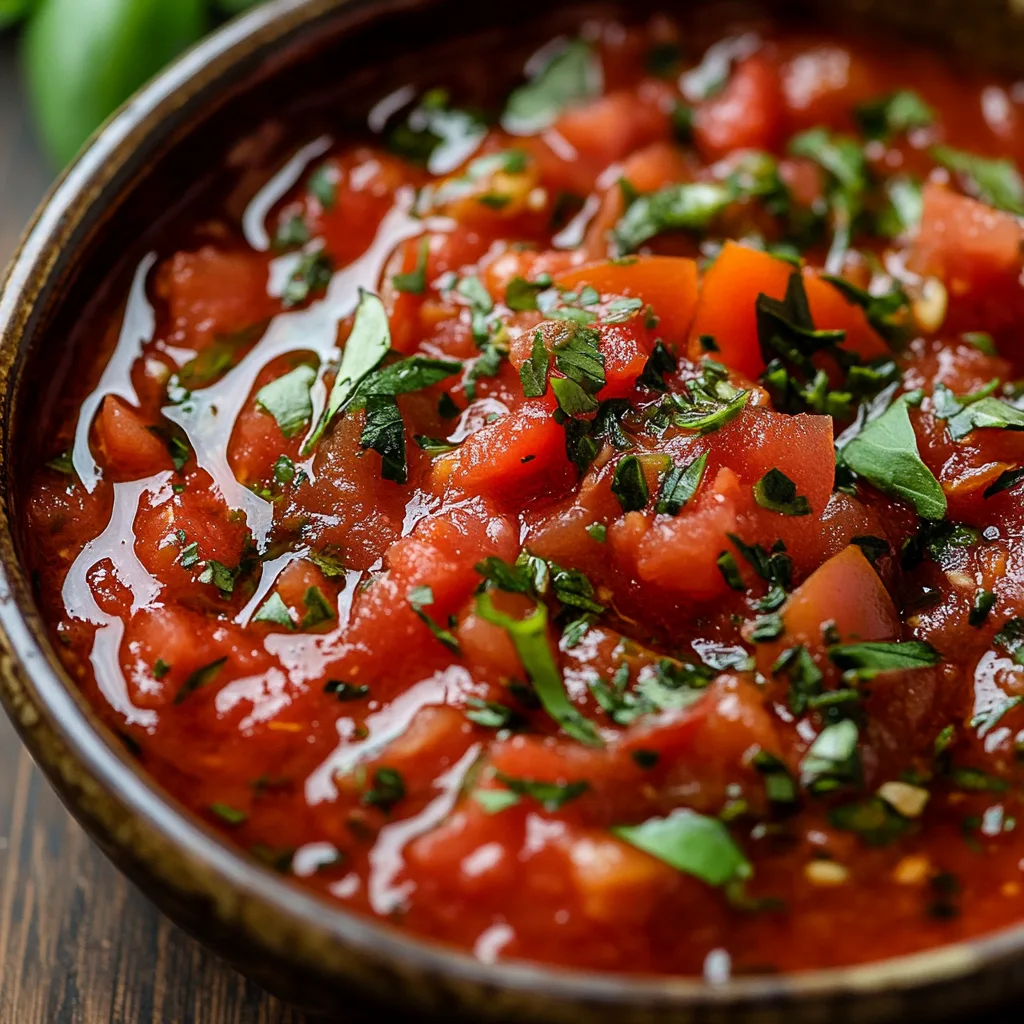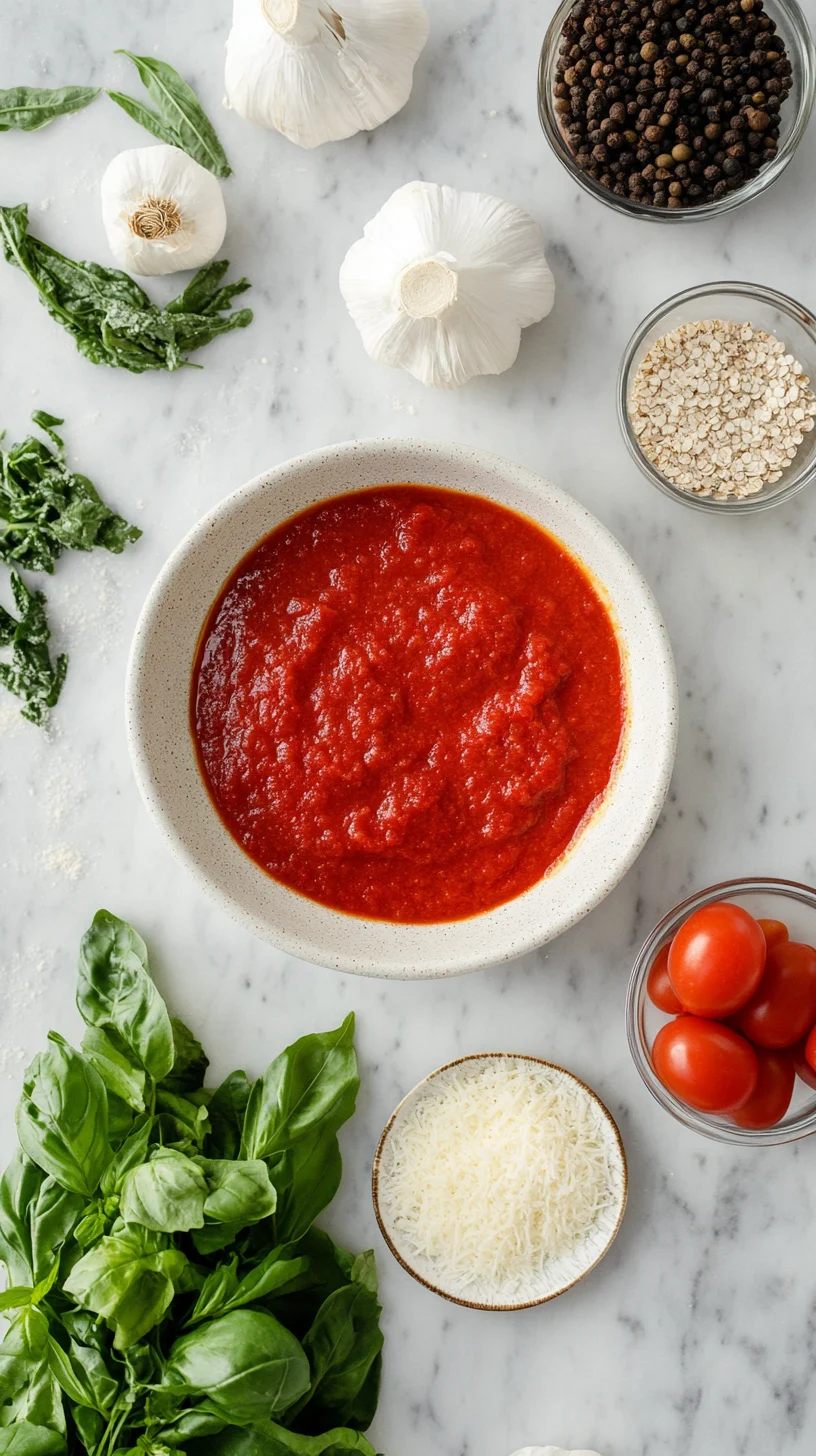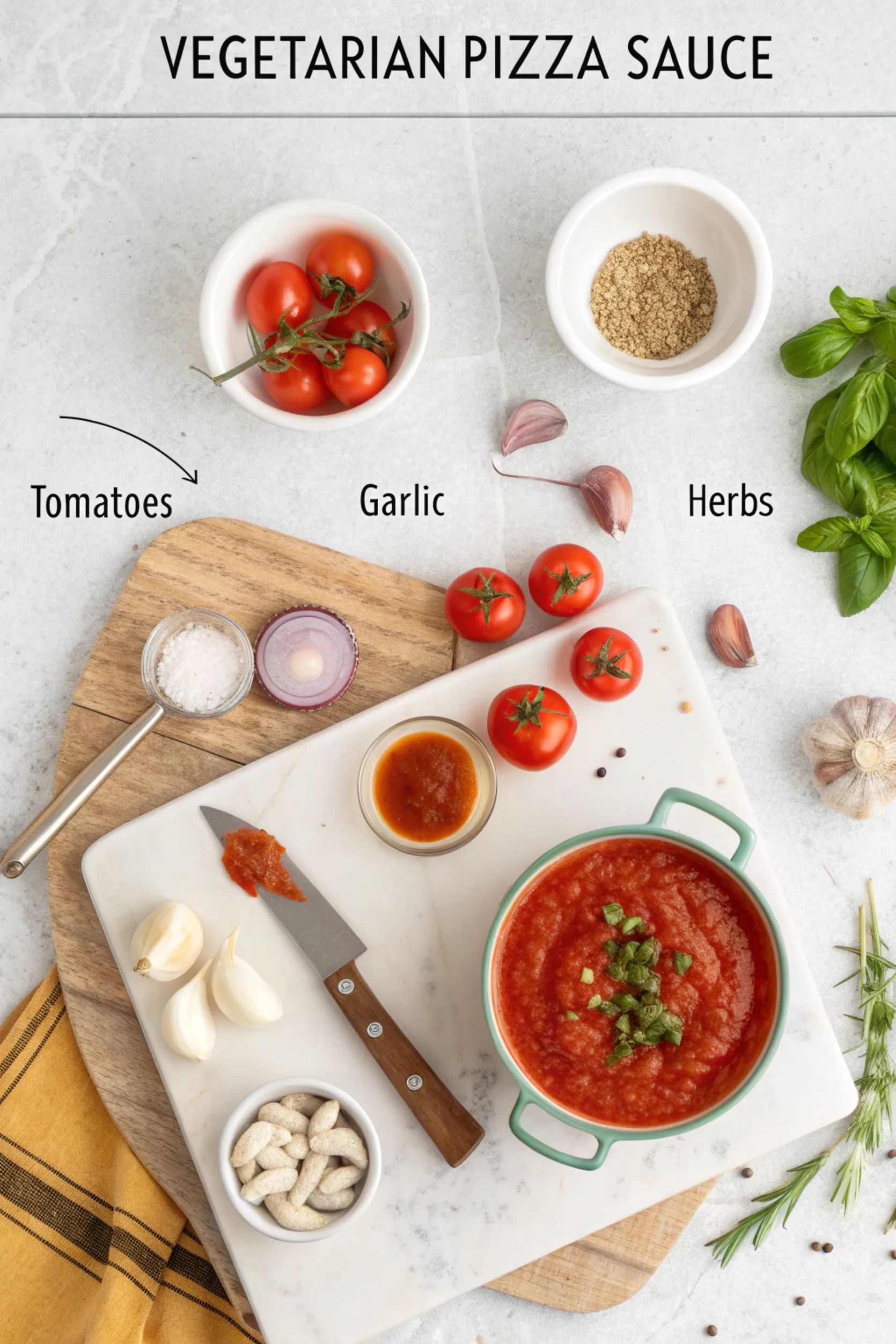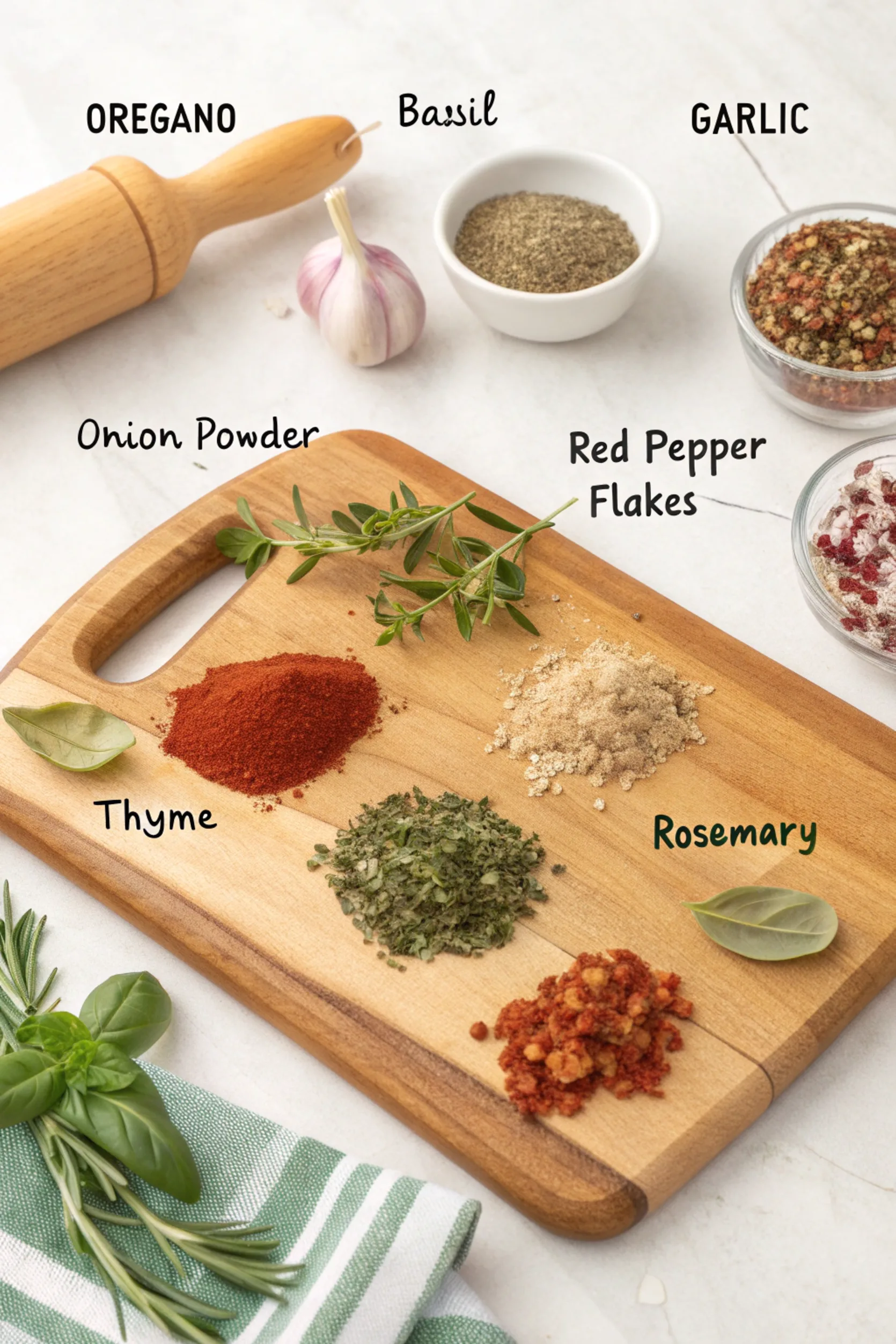When it comes to making the perfect pizza, the sauce is everything. A Vegetarian Pizza Sauce Recipe not only complements the fresh ingredients on your pizza but also adds a burst of flavor that can take your pizza to the next level. The best part? A vegetarian pizza sauce is easy to make, requiring simple ingredients that you probably already have in your pantry. Plus, it’s a great option for vegetarians and those who prefer to keep their pizza plant-based.
Unlike store-bought versions, homemade vegetarian pizza sauce allows you to control the flavors and consistency, ensuring that each bite of your pizza is as delicious as possible. Fresh tomatoes, fragrant herbs, and just the right amount of seasoning come together in perfect harmony, creating a sauce that enhances your pizza without overpowering it.
The Benefits of Homemade Pizza Sauce
Making pizza sauce at home comes with several advantages. First, it’s healthier. You won’t find any added preservatives or hidden sugars that are commonly found in store-bought sauces. By using fresh, wholesome ingredients, you can ensure that your sauce is packed with flavor and free from unnecessary additives.
Second, homemade pizza sauce is more customizable. Whether you like a tangier sauce, one with a kick of spice, or a smooth, herb-infused option, you have the freedom to adjust the ingredients to suit your taste.
Lastly, it’s cost-effective! Store-bought pizza sauces can get expensive over time, but making your own is much more budget-friendly. A small batch can make enough sauce for several pizzas, meaning you get a lot of bang for your buck.
In the following sections, we’ll break down everything you need to make the perfect vegetarian pizza sauce from scratch, starting with the essential ingredients.
Ingredients for Vegetarian Pizza Sauce
Basic Ingredients You Need
To make a classic vegetarian pizza sauce, the ingredients are simple and easy to find. Here’s what you’ll need:
Fresh Tomatoes: Use ripe, juicy tomatoes for the best flavor. Roma tomatoes are a popular choice due to their sweet flavor and low moisture content.
Olive Oil: A high-quality extra virgin olive oil adds richness to the sauce and helps infuse the flavors.
Garlic: Garlic is a must for any pizza sauce. It gives the sauce its aromatic depth and savory punch.
Onion: A small onion adds sweetness and balance to the sauce.
Dried Oregano and Basil: These classic Italian herbs give your pizza sauce that authentic taste.
Salt and Pepper: To taste. Adjust the seasoning based on your preferences.
Sugar (Optional): Sometimes, a pinch of sugar helps balance out the acidity of the tomatoes, but it’s optional.
Optional Ingredients for Extra Flavor
While the basic ingredients will give you a flavorful sauce, there are a few optional ingredients you can add to elevate the taste:
Crushed Red Pepper Flakes: For a little kick of spice, add some crushed red pepper flakes.
Balsamic Vinegar: A splash of balsamic vinegar can add a tangy, complex flavor to your sauce.
Fresh Herbs: Fresh basil or thyme can be added during the cooking process for even more depth.
Now that you’ve got your ingredients, let’s move on to how to prepare the sauce!
Step-by-Step Guide to Making Vegetarian Pizza Sauce
How to Prepare Fresh Tomatoes for Sauce
Start by blanching your tomatoes to easily peel off the skin. Here’s how you can do it:
Bring a pot of water to a boil. Make a small “X” on the bottom of each tomato with a knife.
Drop the tomatoes into the boiling water for about 30 seconds, then immediately transfer them to a bowl of ice water.
Once the tomatoes are cool, peel off the skin and remove the seeds. Chop the tomatoes into small pieces.
For more Recipes
Cooking the Sauce: Tips for Optimal Texture
Heat Olive Oil: In a saucepan, heat olive oil over medium heat. Add the chopped onions and sauté until they become soft and translucent.
Add Garlic: Add the minced garlic to the pan and cook for 1-2 minutes, until fragrant.
Simmer the Tomatoes: Add the chopped tomatoes, oregano, basil, salt, pepper, and sugar (if using) to the pan. Stir everything together and bring it to a simmer.
Cook for Flavor: Let the sauce simmer for about 20 minutes, stirring occasionally. This will help the flavors meld together, and the sauce will thicken.
Blend (Optional): If you prefer a smooth sauce, you can use an immersion blender or regular blender to blend the sauce until smooth. If you prefer a chunkier sauce, leave it as is.
The Best Spices and Herbs for Vegetarian Pizza Sauce
Essential Herbs for Flavor
To achieve that perfect pizza sauce, the right herbs are crucial. The key herbs you’ll want to use include:
Oregano: This is the classic herb for pizza sauce, bringing a warm, slightly bitter flavor.
Basil: Fresh or dried, basil adds sweetness and balances out the acidity of the tomatoes.
Spices to Enhance the Taste
While herbs bring the primary flavor, a few spices can elevate your sauce:
Garlic Powder: In addition to fresh garlic, garlic powder gives the sauce an extra depth of garlic flavor.
Red Pepper Flakes: If you like a bit of heat, red pepper flakes are perfect for adding spice to your sauce.
Onion Powder: If you prefer a milder onion flavor, onion powder is a good alternative to fresh onions.
A combination of these herbs and spices will create a rich, aromatic sauce that pairs wonderfully with any pizza.
Vegetarian Pizza Sauce Variations
Vegan-Friendly Pizza Sauce Recipe
The basic vegetarian pizza sauce recipe is naturally vegan, but if you’re looking to enhance it with different flavors, here are some options:
Roasted Garlic: Roasting the garlic instead of sautéing it gives the sauce a mellow, sweeter flavor.
Add Nutritional Yeast: For a cheesy, umami taste without dairy, stir in some nutritional yeast.
Spicy Pizza Sauce Recipe
If you love a bit of heat, try this spicy variation:
Add extra crushed red pepper flakes to the sauce while it simmers.
For a deeper, smoky flavor, consider adding smoked paprika or chipotle powder.
You can even blend in jalapeños or habanero peppers for a real kick.
This variation will satisfy anyone who likes their pizza with a spicy twist!
How to Store and Preserve Your Sauce
Freezing Vegetarian Pizza Sauce
One of the best things about making your own pizza sauce is that you can make a large batch and freeze it for later use. Here’s how:
Allow the sauce to cool completely.
Transfer it to airtight containers or freezer bags.
Label and date the bags or containers, then place them in the freezer.
The sauce can last for up to 3 months in the freezer. To use it, simply thaw it in the refrigerator overnight or reheat it on the stove.
How Long Will It Last in the Refrigerator?
If you’re planning to use your sauce within the week, store it in an airtight container in the refrigerator. The sauce should stay fresh for up to 5 days. For longer storage, freezing is the best option.
FAQs About Vegetarian Pizza Sauce
How Can I Make Vegetarian Pizza Sauce Without Tomatoes?
If you’re looking to make a tomato-free pizza sauce, you can try a pesto sauce or white sauce made with ingredients like olive oil, garlic, and herbs. A creamy white sauce made from dairy or cashews can be a great base for pizza, offering a completely different flavor profile while still being delicious and vegetarian.
Can I Use Store-Bought Sauce Instead of Homemade?
While homemade pizza sauce will always be the most flavorful and customizable option, you can definitely use store-bought sauce in a pinch. Look for high-quality, organic pizza sauce that’s free from additives or preservatives. If you have store-bought sauce, consider adding some extra herbs or spices to give it a homemade flavor boost.
How Do I Make the Sauce Thicker?
If you prefer a thicker pizza sauce, let it simmer for longer to reduce the liquid content. Alternatively, you can blend it with less water or add a tablespoon of tomato paste to thicken the sauce.
Can I Add More Spice to the Sauce?
Absolutely! If you like spicy pizza, you can add more crushed red pepper flakes or cayenne pepper to the sauce while it simmers. Adjust it to your taste preference until you get the right level of heat.
How Do I Make a Gluten-Free Pizza Sauce?
The great news is that pizza sauce is naturally gluten-free! The ingredients in this vegetarian pizza sauce are all naturally gluten-free, so you can feel free to use it with gluten-free pizza dough or a cauliflower crust. Just make sure your dough is gluten-free, and your pizza will be completely gluten-free.
Conclusion: Creating the Perfect Vegetarian Pizza with Your Homemade Sauce
Making your own vegetarian pizza sauce is a simple and rewarding way to take your homemade pizzas to the next level. By following the steps in this recipe, you’ll be able to create a flavorful, fresh sauce that pairs perfectly with your choice of toppings. Whether you’re using a classic pizza dough or a gluten-free alternative, your homemade sauce will bring everything together in the most delicious way possible.




